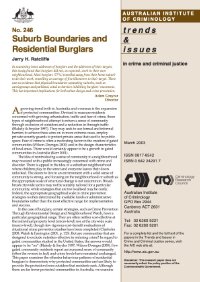By Andrew D. Newton, Michelle Rogerson and Alex Hirschfield
This paper explores the relationship between the allocation of target hardening and burglary risk based on recent research in the City of Liverpool. Individual property‐level data from a range of sources was collated for each residential property in the city using a unique property reference number. This produced a rich data set enabling burglary and target hardening activity to be analysed through time at both the individual property‐level and across a variety of spatial units (e.g. super output areas, wards and regeneration areas). The results highlight an imperfect alignment between target hardening and burglary risk locations largely attributable to the influence of Liverpool’s area based regeneration initiatives. The paper makes the case for prioritising properties for target hardening based on a combination of the prior burglary history of individual properties, the burglary risk of an area, and existing levels of target hardening protection.
Huddersfield, UK: University of Huddersfield, 2008. 25p.





















